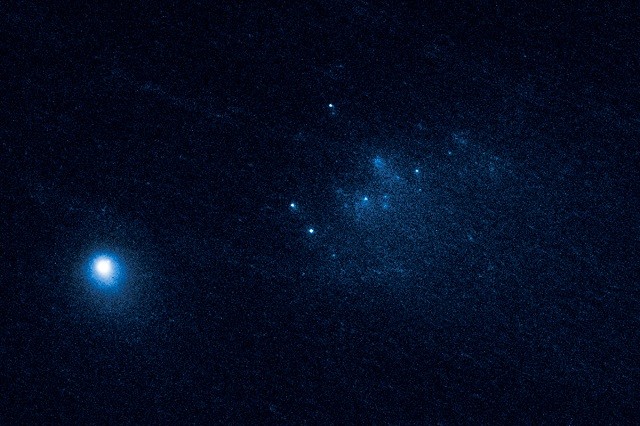-
Tips for becoming a good boxer - November 6, 2020
-
7 expert tips for making your hens night a memorable one - November 6, 2020
-
5 reasons to host your Christmas party on a cruise boat - November 6, 2020
-
What to do when you’re charged with a crime - November 6, 2020
-
Should you get one or multiple dogs? Here’s all you need to know - November 3, 2020
-
A Guide: How to Build Your Very Own Magic Mirror - February 14, 2019
-
Our Top Inspirational Baseball Stars - November 24, 2018
-
Five Tech Tools That Will Help You Turn Your Blog into a Business - November 24, 2018
-
How to Indulge on Vacation without Expanding Your Waist - November 9, 2018
-
5 Strategies for Businesses to Appeal to Today’s Increasingly Mobile-Crazed Customers - November 9, 2018
Our Best Glimpse Yet of a Disintegrating Comet
The images, which were captured over the course of three days in January of this year, show chunks of the comet drifting away into space at what NASA believes to be approximately the same speed at which adult humans walk.
Advertisement
The images suggest that the roughly 4.5-billion-year-old comet, named 332P/Ikeya-Murakami, or Comet 332P, may be spinning so fast that material is ejected from its surface.
The results are published in the September 15, 2016, issue of The Astrophysical Journal Letters, a peer-reviewed journal.
“We know that comets sometimes disintegrate, but we don’t know much about why or how they come apart”, said lead author David Jewitt, an astronomer based at UCLA, in a statement. However, when this happens, it often takes place quickly without any warning, leaving no time to study this phenomenon. With Hubble, however, the telescope’s outstanding resolution has made it possible not only to see faint, tiny pieces of the 332P but also to observe the changes happening to it day by day. That has allowed us to make the best measurements ever obtained on such an object.”This looping animation was made from multiple images taken over three days, 26-28 January 2016, with Hubble’s Wide Field Camera 3″.
Observations of comets like Comet 67P/Churyumov-Gerasimenko show that when icy comet materials heat up and turn into vapor, they can spray out of cracks and crevices in the comet’s surface, creating jets. Their shapes change, too, as they break apart. As they orbited the sun at over 50,000 mph, the shards were separating at just a few miles for every hour.
The Hubble images show that the parent comet changes brightness frequently, completing a rotation every two to four hours. The comet is also much smaller measuring only 1,600 feet across, than what astronomers earlier thought. The faster spin rate loosened chunks of material, which are drifting off into space.
“In the past, astronomers thought that comets die when they are warmed by sunlight, causing their ices to simply vaporize away”, Jewitt said.
Astronomers have witnessed the beginning of the end of an ancient comet. The researchers believe that the comet may have split in two in 2012 (visible in the images as a second small bright dot, right next to the main body), and that the fragments seen in the Hubble images were probably ejected between October and December previous year.
Advertisement
While it didn’t experience the dramatic flare outs sungrazing comets see, Comet 332P still feels the effects of the sun that far out. And thanks to the Hubble, we can now see what could be the best, most detailed look at a comet disintegrating and dying. “In Comet 332P we may be seeing a comet fragmenting itself into oblivion”. While the chunks might seem massive – because they are – researchers estimate that the comet contains enough material to endure 25 more outbursts of similar magnitude. If one fragmentation event happens every trip around the sun, Comet 332P will be history in 150 years. Comets originate in the Kuiper Belt, the sphere of rocky, icy objects beyond the orbit of Neptune. Jupiter’s enormous mass then set it in motion on its current orbit. The Comet 332P died after being around 4,5 billion years around the solar system.




























